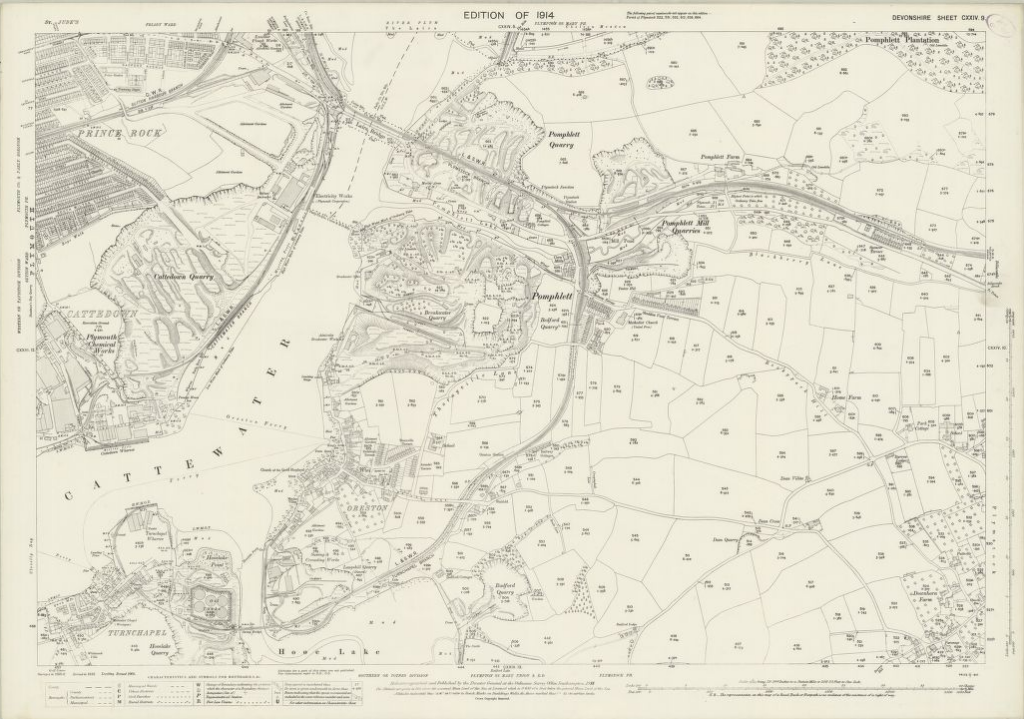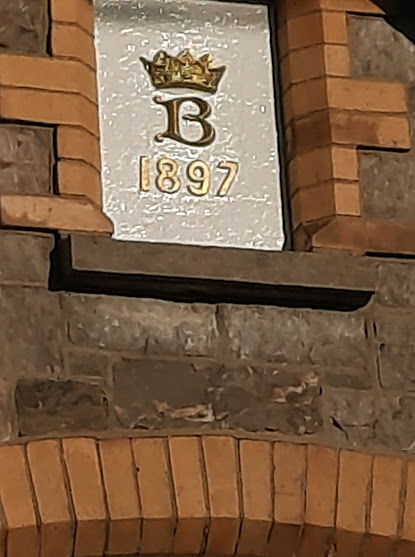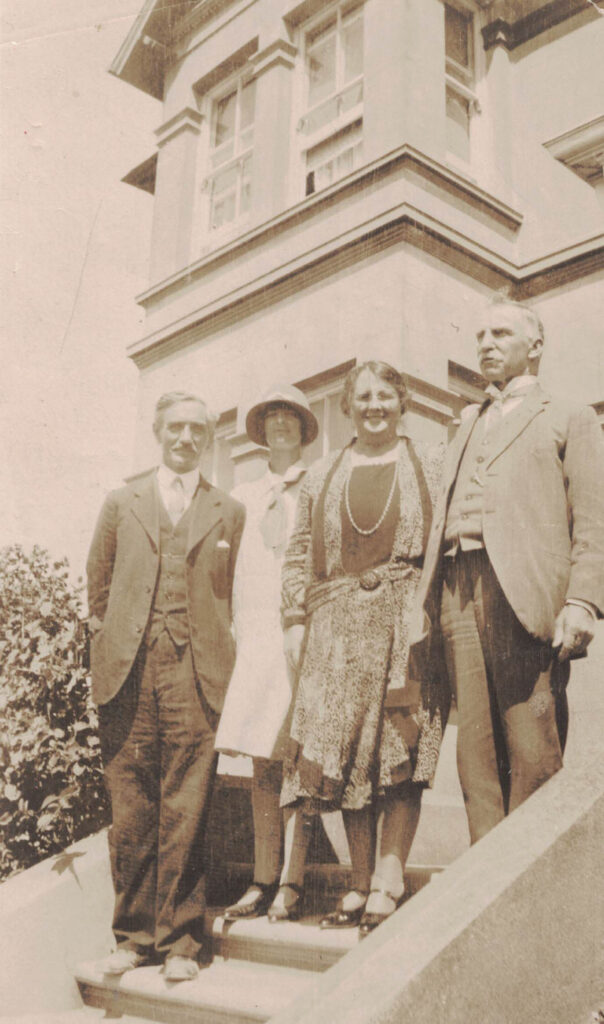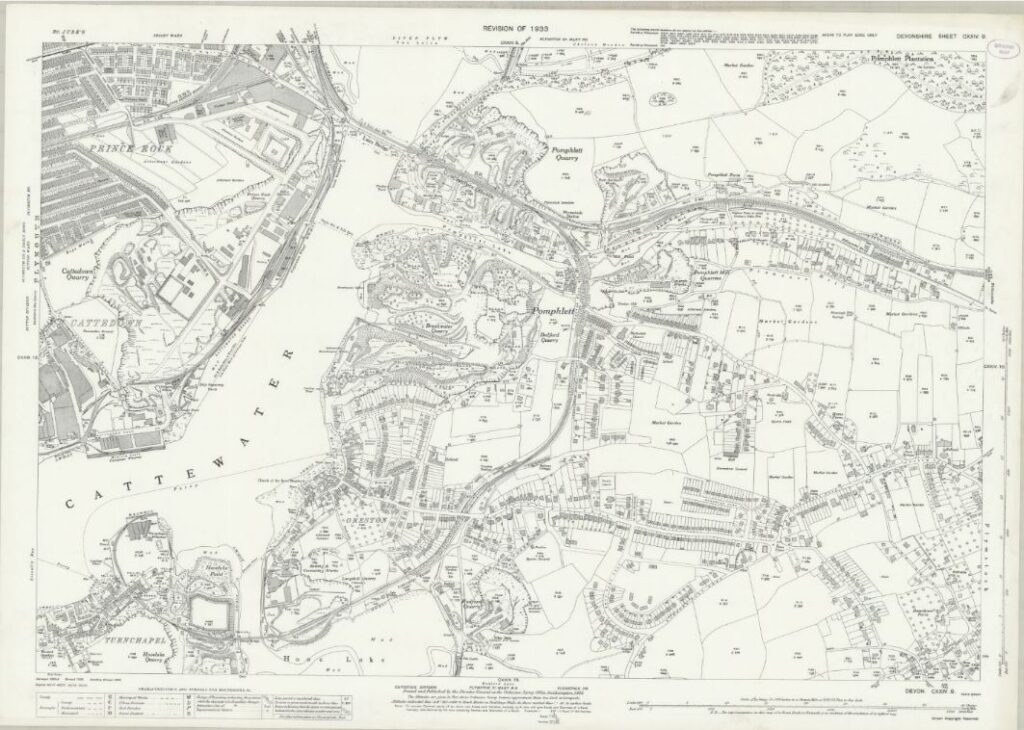This story is one of the runner-up stories in the 20sStreets competition. The competition invited entrants to research and share stories of the 1920s, searching for the most fascinating local history stories covered by the 1921 Census of England and Wales. There were six winning stories and twelve runners-up entries. 
Plymstock: The end of a village
By Anne Corry – runner up, one of ten in the Individual category

Ordnance Survey Map of Devon showing Plymstock – as of 1914. Reproduced with the permission of the National Library of Scotland. https://maps.nls.uk/view/106006949
The 1921 Census shows the population of the Parish of Plymstock as 4,121; by 1931 it had grown to 7,057. [See A Vision of Britain through Time – GB Historical GIS University of Portsmouth]
In 1927 Mr Webb, Plymouth’s Housing Manager said there was an exodus of townspeople to villages. On 22 May 1925 the Western Morning News described Plymstock as ‘Little Plymouth across the Cattewater’ because the majority of the residents were migrating from Plymouth and journeying to the town daily to follow their business.
How did this collection of small villages, market gardens and quarries become so important that the neighbouring town of Plymouth was contemplating including it in the Borough?
Part of the answer lies in the way transport links with Plymouth improved during the twenties. Plymstock is separated from its neighbour by the Laira Estuary, spanned by a road bridge and a railway bridge. The road bridge was a toll bridge. Both vehicles and pedestrians had to pay for the crossing until, on April 1st 1924, a convoy of 100 cars crossed the bridge to celebrate the end of the toll.
To the growing number of motor car owners, Plymstock seemed an attractive place to live, far enough out of town to be almost ‘the country’ and close enough to get to work and home again for dinner. And the houses that were already there were cheaper than the ones in semi- rural north of Plymouth and the fashionable Mannamead district.
But a desire to live somewhere is not enough if there are no houses to live in, which is where the second strand of the story comes together.
Pre-World War 1 Plymstock was mainly the property of the large estates. The farmers and market gardeners were mostly tenants. Just before the War, impending tax changes saw the big landowners selling off land.
A good deal of the land around Plymstock and the neighbouring hamlet of Pomphlett belonged to the Duke of Bedford and most of it was sold by auction in 1911.

Gable End of Home Farm House, showing the Duke of Bedford’s Cypher
One of the bidders there was Joe Rowland. Originally from South Brent in Devon, Joe’s family moved to Plymouth and established themselves as market gardeners. In the 1921 Census Joe, farmer and Elizabeth, with their servants William and Beatrice Northey, are living at Home Farm. Joe bought: Home Farm, Quick’s farmhouse, Millway Farm and pasture land in 1911 and then moved into Home Farm House, a large and imposing structure of grey limestone, its gable end adorned with the letter ’B’ and a ducal coronet. The house still stands with some of the original outbuildings but the last of the farm land was built over in the early 1950s.
Joe’s great nephew says that he had an eye for business and began selling off land for building plots in 1921. Town planning was in its infancy. Permission to build houses was granted by the Medical Officer of Health for the district and the requirements were minimal: the plot must have ‘frontage’ and access to water. The size, layout and construction of the house were in the hands of the developer and there was no consideration given to the existing amenity value of the proposed site.
Our second entrepreneur is Richard Leander Morrish who moved from Saltash to Dean House, Plymstock in 1915. In the 1921 Census, Richard and Mary, their five children, three helping their father in the market garden family business are living at Dean House.
Richard, like his father and grandfather was a market gardener; he even offered advice to local allotment holders and amateur gardeners. Unlike his family Richard had wider interests and his obituary in 1933 described him as a prominent figure in Plymouth trading circles as a market and a fruit and vegetable grower and trader but also a car seller, house speculator and a prominent figure in the local cattle markets.
In 1920 Richard was offering about seven and half acres of land for sale as building plots, stressing that they had access to roads, water supplies and local supplies of stone for building.
Richard’s interest in the local people went beyond his giving gardening tips; he built and founded the Plymstock Social Club, then the heart of the Plymstock community and still going today.

William ‘King Billy’ Mitchell in 1920s at Rockville House
The last, and most colourful, of our characters, is William Alfred Mitchell, known as ‘King Billy of Plymstock’. In the 1921 Census Billy, Corn Merchant and Priscilla with Arthur, step-son and Gordon, son and their servant Alice are living at Rockville.
King Billy was a member of Plympton Rural District Council, which controlled Plymstock at that time. He, too, bought parcels of land at the 1911 auction and began building houses in Pomphlett. Six years later he bought the Radford Estate for £11,000.
He was described as being devoted to Plymstock and especially the hamlet of Pomphlett, not buying a pair of shoe laces outside the parish. Billy Mitchell built a bungalow to be lent to the Plymstock Nursing Association for accommodation for the district nurse. He left the bungalow to the Association in his will.
In 1913 there was a minor sensation in Plymstock when King Billy was arrested on a charge of arson in relation to Pomphlett Mill, with intent to commit insurance fraud. The charge was dismissed. The allegation of arson had been brought by Billy’s brother, captain of the local fire brigade because he believed that their father had left the mill to him and not Billy.
In 1917, the Harris Bulteel Trustees sold a 602 acre Radford Estate, Plymstock and Billy was successful in purchasing the principal Lot No.11 which consisted of the vast 50 roomed Radford mansion house itself (immortalised in Daphne du Maurier’s novel “The King’s General, of 1946, as “A great barracks of a place the other side of Plymouth”), the landscaped parkland, gardens, pleasure grounds, woods, lakes and dairy farms, totalling some 263 acres for £11,000.
So, when looking out from the Drawing Room windows at Rockville, Billy had quite literally now become “Lord of all he surveyed”, his Pomphlett and Radford property holdings together amounting to some 500 acres in total. His development of the linear “Radford Park Building Estate”, along the perimeter road of the Park, thus inevitably followed during the 1920’s.
King Billy died of a heart attack in 1930 while addressing Devon County Council at Exeter. In his obituary it was said that he was extremely proud that many years ago he had seen that what was a small hamlet was bound to become a great suburb of the city and that he had had something to do with it.
Of course, these three were not the only ones involved in the suburbanisation of Plymstock. Randwick Park Road was built by the Billacombe Trading Company. Until 1924, there was a racecourse and football field at Randwick Park.
What was the locals’ reaction to the changes in their surroundings? One letter writer, Mr Gay, described the houses in Randwick Park Road as ‘semi-Asiatic bungalows’.
As early as 1924, Plympton St Mary Rural District Council, commenting on the untidy and unplanned ribbon-like development in Plymstock, passed a resolution calling for a planning scheme for Plymstock. Work on the scheme started the following year, but it did not receive approval from the Minister for Health until 1939 when the outbreak of war prevented its being put into operation.
There were objectors; one of them was Joe Rowland. Percy Loosemore, who was Clerk to the Council, appealed to the wealthy landowners to stop their objections, suggesting that they had “made nice little fortunes” out of the land. Joe Rowland replied that such observations were uncalled-for.
The debate went on between those who represented the landowners and those who wanted to protect the amenity value of some of the land and not deprive the people living there of their allotments and playing fields.
The villages and hamlets of Plymstock, Elburton, Staddiscombe, Pomphlett, Home, Turnchapel and Oreston today form the single suburb of Greater Plymstock, all within the City boundaries of Plymouth; and development continues.
